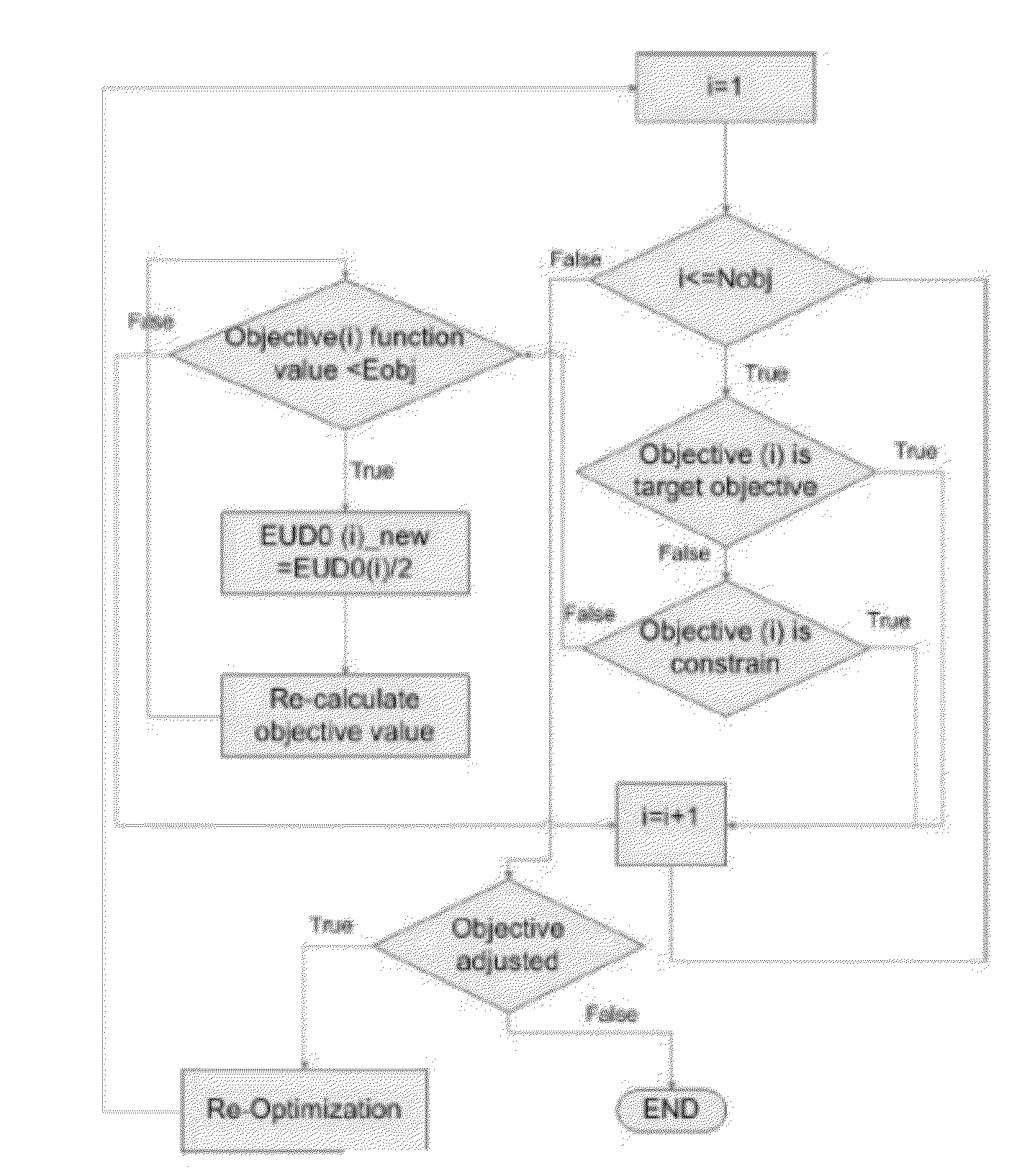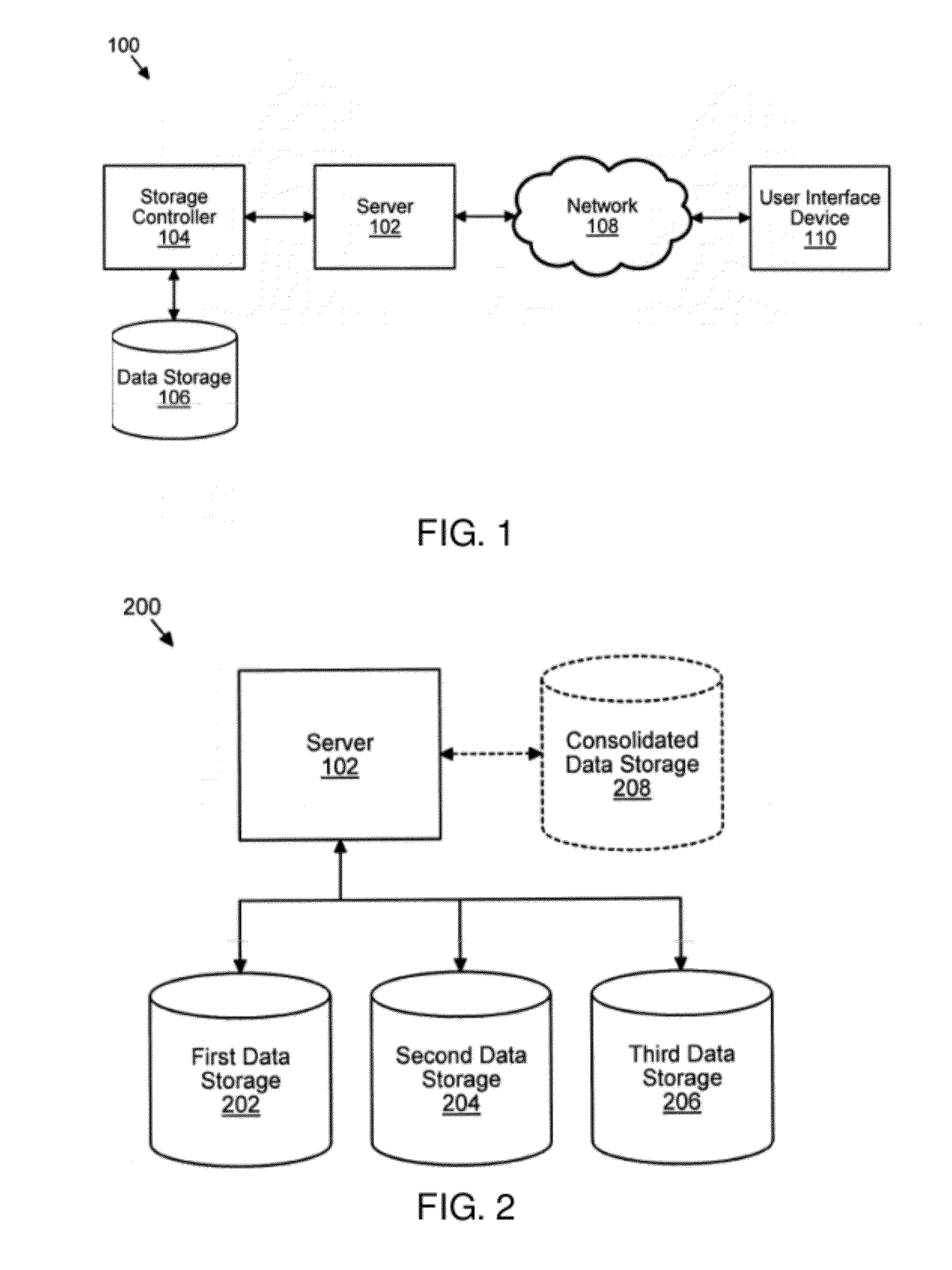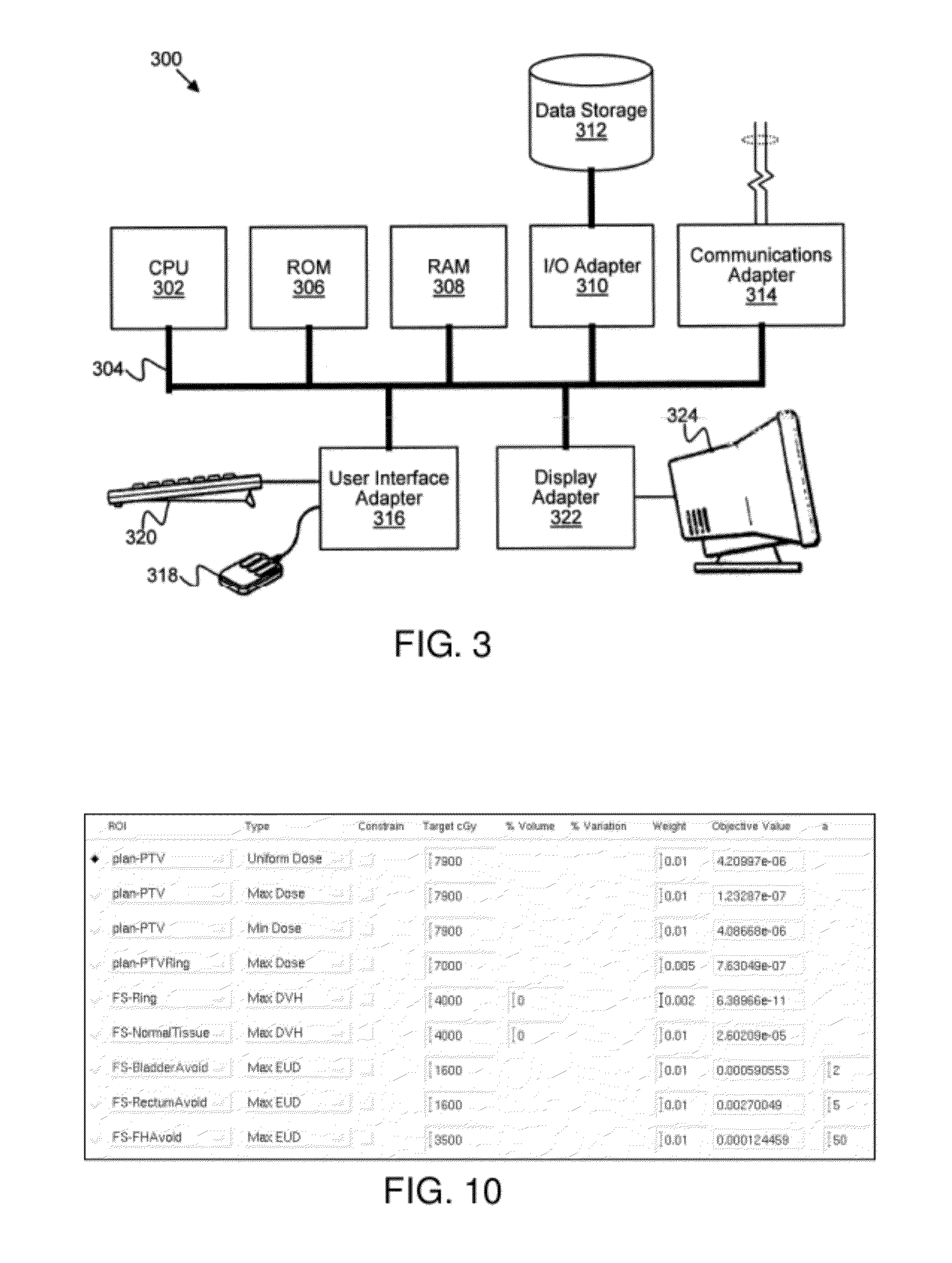Automated treatment planning for radiation therapy
a technology for radiation therapy and treatment planning, applied in the field of treatment planning, can solve the problems of time-consuming and frustrating imrt planning, difficult to translate clinical requirements into cost functions, and complex process of imrt treatment planning
- Summary
- Abstract
- Description
- Claims
- Application Information
AI Technical Summary
Benefits of technology
Problems solved by technology
Method used
Image
Examples
example 1
AutoPlan for Use in Generating Treatment Plans for Lung Cancer Tumors
[0197]A. Treatment Plan Expert Database
[0198]A treatment plan expert database was created from 150 lung cancer cases previously designed by dosimetrists. In this database, the tumor position, beam angles (gantry, couch, collimator angles), and tumor sizes were recorded for each plan. The expert database served as the base for the beam angle selections of the beam angle algorithm.
[0199]B. Beam Angle Selection Based on Expert's Experience
[0200]Step 1 in FIG. 4 mainly involves the selection of coplanar and non-coplanar beam angles for each plan. The tumor position was defined in left, middle and right position of the lung. In FIG. 14, shows the frequency distribution of coplanar beam angles selected by the expert dosimetrists for treatment of lung cancer. The angle distribution for tumors located at the left side of lung is different from that used on the right side of the lung. For example, if the tumor is located on...
example 2
AutoPlan for Use in Generating Treatment Plans for Prostate Cancer Tumors
[0231]Eleven randomly selected prostate-cancer patients, each prescribed 76 Gy in 38 fractions, were studied. Each patient had a clinical plan that was generated by a dosimetrist using 8-beam IMRT with standard beam angles used in the treatment institution. A VMAT plan using two arcs (360-degree back and forth) was generated for each patient with autoplan algorithm. Also, a series of IMRT plans based on different numbers of beam angles were generated with the autoplan algorithm for each patient. For each patient, IMRT plan was started using autoplan with 8 beams with selected beam angles and the beam number was increased to 12, 16, and so on until the IMRT plan reach similar quality as the VMAT plan. All the autoplan-based IMRT plans used beam angles that one would consider would produce better organ-at-risk (OAR) sparing. Among the three usual OARs in prostate cancer, the femoral heads and the bladder are gene...
example 3
AutoPlan for Use in Generating Treatment Plans for Head and Neck Tumors
[0247]The AutoPlan algorithm for head-and-neck cancer follows a similar approach to that of prostate cancer. First, the algorithm automatically generates planning ROI structures based on physician-drawn contours; the newly generated structures involve modifications and additions to the original contours in order to improve the planning quality and efficiency. Radiation beams with pre-selected angles are then automatically configured and the inverse planning objectives with pre-defined parameters are loaded into the Pinnacle3 planning system. Optimization of the objectives is executed for the first round and then the PTV objective functions are evaluated. If all the PTV objectives are all well satisfied, increase the OAR objective weight or lower the OAR objective dose and continue optimization without resetting the beams; repeat this process until one or more PTV objectives are not well satisfied. In the last ste...
PUM
 Login to View More
Login to View More Abstract
Description
Claims
Application Information
 Login to View More
Login to View More - R&D
- Intellectual Property
- Life Sciences
- Materials
- Tech Scout
- Unparalleled Data Quality
- Higher Quality Content
- 60% Fewer Hallucinations
Browse by: Latest US Patents, China's latest patents, Technical Efficacy Thesaurus, Application Domain, Technology Topic, Popular Technical Reports.
© 2025 PatSnap. All rights reserved.Legal|Privacy policy|Modern Slavery Act Transparency Statement|Sitemap|About US| Contact US: help@patsnap.com



